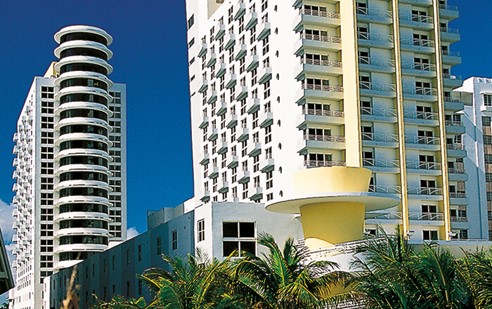
Building real estate is a key driver of economic growth and urban transformation, but it does not exist in a vacuum. It is closely linked to infrastructure improvement, with each playing a critical role in shaping the future of communities. As cities expand and new developments rise, the demand for robust infrastructure—roads, utilities, public transportation, and other essential services—grows. The relationship between property development companies and essential infrastructure is a symbiotic one, where the success of new projects often hinges on the quality and availability of infrastructure, and infrastructure improvements are often triggered by new developments.
The Role of Infrastructure
Infrastructure serves as the backbone of real estate development. Without sufficient roads, utilities, transportation systems, and public services, these building projects would struggle to attract residents or businesses. Investors and real estate developers must consider the state of the existing infrastructure in the areas where they plan to build, as it directly affects the viability of the project and its long-term success.
For example, commercial development companies looking to create large-scale developments in a suburban area will likely need adequate access to roads, public transportation, and utilities such as water, sewage, and electricity. If these infrastructures are not already in place or require significant upgrades, the builder may need to work with local governments to ensure these improvements are made. In some cases, builders may be required to contribute financially to infrastructure projects, such as road expansions or utility enhancements, in order to support their project.
The Impact on Transportation
One of the most immediate and visible effects of building projects are the impact on transportation infrastructure. As new residential, commercial, and industrial properties are built, they bring increased traffic and demand for transportation services. This can put a strain on existing roads, highways, and public transit systems, leading to congestion, longer commute times, and a higher risk of accidents.
In response to these challenges, local governments and urban planners often work with property builders to ensure that transportation infrastructure can accommodate the growing population. This might involve expanding roadways, adding new traffic signals, or redesigning intersections to improve traffic flow. In more urbanized areas, transportation improvements might include the expansion of public transit systems, such as buses, subways, or light rail, to better connect new developments with the rest of the city.
Builders also play a role in shaping the transportation landscape by designing projects that encourage alternative modes of transportation. For instance, mixed-use developments—where residential, commercial, and recreational spaces are integrated into a single area—can reduce the need for residents to rely on cars. By promoting walkability and providing easy access to public transportation, these developments help reduce traffic congestion and lower the environmental impact of new construction.
Utilities and Public Services: A Growing Demand
As populations grow and new developments emerge, the demand for essential utilities—such as water, sewage, electricity, and natural gas—increases. Infrastructure improvements in these areas are critical to ensuring that new developments can function properly and that the needs of current and future residents are met.
In many cases, real estate projects require upgrades to existing utility infrastructure. For example, a large residential development might strain an older water supply or sewage system, requiring the installation of new pipes, treatment facilities, or drainage systems. Similarly, commercial or industrial buildings may require more electricity or gas than what the local grid can currently supply, necessitating upgrades to the power distribution system.
Local governments and utility providers work with real estate professionals to plan for these infrastructure improvements. In some cases, they may be asked to bear part of the cost of these upgrades, particularly if their project significantly increases demand. However, these improvements often benefit the broader community as well, by modernizing aging infrastructure and improving service reliability for existing residents and businesses.
In addition to traditional utilities, modern developments must also consider telecommunications infrastructure. As the demand for high-speed internet and other digital services continues to grow, builders need to ensure that their properties are equipped with the necessary fiber optic cables, wireless networks, and other technologies that enable connectivity.

Public Services: Schools, Healthcare, and Emergency Services
The growth of the real estate industry also impacts public services, such as schools, healthcare facilities, and emergency services. As new residential communities are built, the local population increases, putting additional pressure on these services. Without adequate infrastructure improvements, communities can experience overcrowded schools, longer wait times for healthcare, and slower response times from emergency services.
In response, local governments often require builders to contribute to public services in the form of impact fees or other funding mechanisms. These contributions help pay for the construction of new schools, healthcare clinics, fire stations, and police precincts, ensuring that the community can support its growing population. In some cases, builders may even include these facilities within their projects, creating self-sustaining communities with their own public services.
For example, large-scale master-planned communities often include schools, parks, and healthcare facilities as part of the development plan. By integrating these public services into the design of the community, builders help reduce the strain on existing infrastructure while also making their projects more attractive to potential buyers or renters.
The Benefits of Collaborative Planning
The intersection of real estate development and infrastructure improvement highlights the importance of collaboration between builders, local governments, and utility providers. Without careful planning and coordination, new real estate projects can overwhelm existing infrastructure, leading to congestion, service disruptions, and frustrated residents.
However, when everyone works together to plan for infrastructure improvements, the result is more sustainable, livable communities. By investing in transportation, utilities, and public services, builders not only enhance the value of their projects but also contribute to the long-term growth and prosperity of the region.
Building the Future Together
The relationship between real estate and infrastructure improvement is a delicate balancing act. On the one hand, real estate growth drives the need for expanded infrastructure; on the other hand, the success of new developments depends on the availability of reliable transportation, utilities, and public services. By working together, industry professionals and local governments can ensure that infrastructure improvements keep pace with what’s necessary, creating communities that are not only economically vibrant but also sustainable and resilient for the future.
It is clear that new real estate cannot succeed without strong infrastructure. As cities continue to grow and expand, the collaboration between public and private sectors will be more important than ever, ensuring that both builders and communities thrive in the years to come.

No comments.